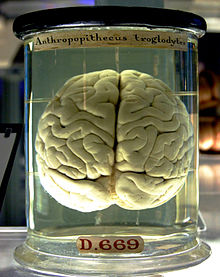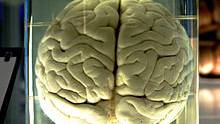The Crack Team That Removes & Preserves People’s Brains Just Hours After They Die
Source: discovermagazine.com
 On average, the residents of Sun City, Arizona, occupy their domiciles for a dozen years. When they depart—almost always by dying—they often leave their brains behind. The stages of physical and mental decline take them from their dream house to a hospital off Del Webb Boulevard, then to a nursing home, and finally back to the medical complex, where researchers harvest their most important organ. Hoping to do good for science, they have enrolled in the Brain and Body Donation Program of the Banner Sun Health Research Institute—widely considered the world’s preeminent brain bank.
On average, the residents of Sun City, Arizona, occupy their domiciles for a dozen years. When they depart—almost always by dying—they often leave their brains behind. The stages of physical and mental decline take them from their dream house to a hospital off Del Webb Boulevard, then to a nursing home, and finally back to the medical complex, where researchers harvest their most important organ. Hoping to do good for science, they have enrolled in the Brain and Body Donation Program of the Banner Sun Health Research Institute—widely considered the world’s preeminent brain bank.A large base of well-
documented donors in close proximity sets the Sun City program apart from other repositories, which often have scant information about patients who may be scattered and diverse. Here, healthy, active seniors who eventually die of, say, heart disease, can be compared with others who develop neurodegenerative disorders. Because the two sets of subjects have similar backgrounds, lifestyles, and ethnic traits, changes relating to a brain disease should be easier to detect.
The institute is also famed for its crack autopsy team, which responds so quickly that no more than three hours elapse from the time a donor expires to the time that the brain is removed and preserved. “We’re not the biggest brain bank in the world, but we have the highest-quality tissue,” says pathologist Thomas Beach, the program director, who notes that donors must live within a 50-mile radius of the morgue.
After withdrawing some blood and cerebrospinal fluid for analysis, a team of rotating techs on duty 24 hours a day remove the top of the skull and take out the brain. The next step relies on a device that resembles a bread slicer, which is used to cut the brain into sections one centimeter thick. The slices from the left side are fixed in formaldehyde and those from the right are frozen between sheets of dry ice. Part of the tissue from the formaldehyde sections is stained, pressed into slides, and put under the microscope to verify the brain’s condition, healthy or diseased. The rest, light brown and convoluted, may be held in Tupperware containers at the research institute indefinitely. A recent visit to the storeroom turned up a container dated 1994.
These fresh brain sections, kept in carefully monitored freezers, are hot properties for advanced neuroscience research. Because the brain’s proteins, DNA, and other molecules are still intact, pharmaceutical companies are willing to pay high prices for the tissue.
One of the most prized specimens is a sample of the entorhinal cortex, regarded as the X on the brain’s treasure map by Alzheimer’s researchers because the disease is thought to originate there; the nonprofit brain bank charges up to $1,000 for half a gram.
[...]
Read the full article at: discovermagazine.com






















